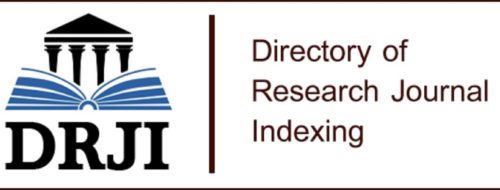Market size effect and relationship between industrial trade: Sectoral panel data analysis for OECD countries
Öz
Intra-Industry Trade (IIT) is defined as the simultaneous import and
export of products produced in the same sector. Home Market Effect (HME) is
defined as the proportional relationship between the share of a country in
world production in any good and the demand of that country for the same good.
When we consider the increasing returns to scale, the existence of imperfect
competition markets and transportation costs, HME has a result that a country
whose domestic demand is above the world average for any commodity has an above
average production share in the same production in the world. Since the Krugman
(1980), it has been seen that the HME thesis, which was put forward to
determine the components of international trade, has been tested in many
empirical studies. However, no study examining the effect of IIT and HME was
found. What motivates us for this study is the idea that it may be one of the
determinants of IIT, which is associated with market size, increasing returns
to scale and transport costs.
The aim of the study is to determine whether the effect of market size
is one of the determinants of IIT. In this context, dynamic panel data analysis
was performed by using the data of foreign trade data and country data of
manufacturing industry of 34 OECD countries between 2000-2016. According to the
results obtained, the coefficients of the variables (production scale,
transportation costs) that we included in the model representing the HME were
significant and it was concluded that the HME was a variable contributing to
IIT in accordance with our expectations. The most important contribution of
this study is to provide a new perspective on the effect of market size in
terms of IIT. In addition to the theoretical contribution of the results
obtained, it is thought that countries can shed light on the political practices
related to foreign trade components.
Anahtar Kelimeler
Intra-Industry Trade New Trade Theory Market Size Effect Grubel-Lloyd Index Panel GMM
Kaynakça
- Arellano, Manuel ve Stephen Bond (1991); “Some Test of Specificationfor Panel Data: Monte Carlo Evidenceand an Aplication to Employment Equations,” The Review of Economic Studies, 58(2), s. 277-297.
- Balassa, Bela (1986); “The Determinants of Intra-Industry Specialization in United States Trade,” Oxford Economic Paper, 38(2), s. 220-233.
- Balassa, Bela ve Luc Bauwens (1987); “Intra-Industry Specialisation in a Multi-Industry Framework,” The Economic Journal, 97(388), s. 923-939.
- Behrens, Kristian, Andrea R. Lamorgese, Gianmarco I.P. Ottaviano ve Takatoshi Tabuchi (2009); “Beyond the Home Market Effect: Market Size and Specialization in a Multi-Country World,” Journal of International Economics, 79(2), s. 259-265.
- Bergstrand, Jeffrey H. (1990); “The Heckscher-Ohlin Samuelson Model, The Linder Hypothesis and the Determinants of Bilateral Intra-Industry Trade,” The Economic Journal, 100(403), s. 1216-1229.
- Brülhart, Marius (2009); “An Account of Global Intra-Industry Trade, 1962-2006,” The World Economy, 32(3), s. 401-459.
- Brülhart, Marius ve Michael Thorpe (2000); “Intra-Industry Trade and Adjustment and Malaysia: Puzzling Evidence,” Applied Economic Letters, 7(11), s.729-733.
- Caetano, Jose ve Aurora Galego (2007); “In Search for the Determinants of Intra-Industry Trade with in an Enlarged Europe,” South-Eastern Europe Journal of Economics, s. 163-183.
- Caves, Richard E. (1981); “Intra-Industry Trade and Market Structure in the Industrial Countries,” Oxford Economic Paper, 33(2), s. 203-223.
- Clark, Don P. (1993); “Recent Evidence on Determinants of Intra-Industry Trade,” Weltwirtschaftliches Arcihve, s. 332-344.
- Clark, Don P. ve Denise L. Stanley (1999); “Determinants of Intra-Industry Trade Between Developing Countries and the United States,” Journal of Economic Development, 24(2), s. 79-95.
- Clark, Don P. ve Denise L. Stanley (2003); “Determinants of Intra-Industry Trade Between the United States and Industrial Nations,” International Economic Journal, 17(3), s. 1-18.
- Çalışkan, Özgür (2010); “Türkiye AB Ticaretinde Endüstri İçi Ticaret Olgusu (1990-2007),” Hacettepe Üniversitesi İİBF Dergisi, 28(2), s. 1-45.
- Çepni, Elif ve Nezir Köse (2003); “Intra-Industry Trade Patterns of Turkey: A Panel Study,” Gazi Üniversitesi İktisadi ve İdari Bilimler Fakültesi Dergisi, 5(3), s. 13-28.
- Davis, Donald R., David E. Winstein (1998); “Economic Geography and Regional Production Structure: An Emprical Investigation,” European Economic Review, 4(2), s. 379-407.
- Davis, Donald R., David E. Winstein (2003); “Market Access, Economic Geography and Comparative Advantage: An Emprical Test,” Journal of International Economics, 59(1), s. 1-23.
- Davis, Donald R. (1997),”The Home Market, Trade, and Industrial Structure,” NBER WorkingPaper, s.2-27.
- Ekanayake, E. M. (2001); “Determinants of Intra-Industry Trade : The Case of Mexico,” The International TradeJournal, 15(1), s. 89-112.
- Erlat, Güzin ve Haluk Erlat (2003); “MeasuringIntra-IndustryTradeandMarginalIntra-IndustryTrade: The Case forTurkey,” EmergingMarkets Finance andTrade, 39(6), s. 5-38.
- Fainstein, Grigori and Aleksei Netsunajev (2011); “Intra-IndustryTrade Development in theBalticStates,” EmergingMarkets Finance&Trade, 47(3), s. 95-110.
- Feenstra, Robert C., James R. Markusen ve Andrew K. Rose (2003); “Using The Gravity Equation to Differantiate Among Alternative Theories of Trade,” Canadian Journal of Economics, 34(2), s. 430-447.
- Gabrisch, Hubert (2006); “Vertical Intra-Industry Trade Between EU and Accession Countries,” IWH Discussion Papers, 12, s. 1-24.
- Grubel, Herbert ve Peter Lloyd (1975); Intra-Industry Trade: The Theory and Measurement of International Trade in Differentiated Producs, Mac Millan Press, London.Hausman, J. A. (1978);“SpecificationTests in Econometrics,”Econometrica, 46, s. 1251–1271.
- Head, Keith ve John Ries (2001); “IncreasingReturnsversusNational Product Differantiation as an Explanation fort he Pattern of U.S.-CanadaTrade,” TheAmericanEconomicReview, 91(4), s. 858-876.
- Head, Keith, ThierryMayertt ve John Ries (2002); “On thePervasiveness of Home Market Effects,” Economica, 69(275), s. 371-390.
- Kandoğan, Yener (2003); “Intra-Industry Trade of Transition Countries: Trends and Determinants,” Emerging Markets Review, 4(3), s. 273-286.
- Krugman, Paul (1980); “Scale Economies, Product Differentiation, and the Pattern of Trade,” The American Economic Review, 70(5), s. 950-959.
- Lapinska, Justyna (2015); “The Economic Integration as a Determinant of Intra-Industry Trade: The Case of Poland,” International Economics, 22(33), s. 77-87.
- Lee, Young Sun (1989); “A Study of Determinants of Intra-Industry Trade Amongthe Pacific Basin Countries,” Weltwirtschaftliches Archiv, 125(2), s. 346-358.
- Lefillear, Julien ve MathildeMaurel (2010); “Inter and Intra Industry Linkages as a Determiant of FDI in Central and Eastern Europe,” Economic System, s. 309-330.Linder, Staffan Burenstam (1961); An Essay On Trade and Transformation, Wiley, New York.
- Loertscher, Rudolf ve Frank Wolter (1980); “Determinants of Intra-Industry Trade: Among Countries and Across Industries,” Review of World Economics, 116(2), s. 280-293.
- Phan, Hoan Thanh ve Young Ji Jeong (2014); “An Emprical Analysis of Intra-Industry Trade in Manufactures Between Koreaand ASEAN,” Journal of Economic Studies, 41(6), s. 833-848. . Sharma, Kishor (2002); “How Important is the Processed Food in Intra-Industry Trade? The Australian Experience,” Journal of Economic Studies, 29(2), s.121-130.
- Stone, Joe A. ve Hyun-Hoon Lee (1995); “Determinants of Intra-Industry Trade: A Longitudinal, Cross-Country Analysis,” Weltwirtscahftliches Archive, Cilt 131, s.67-85.
- Şentürk, Canan ve Levent Kösekahyaoğlu (2014); “Türkiye’nin Endüstri İçi Ticaretinin Ülke ve Politika Temelli Belirleyicilerine Yönelik Bir Uygulama,” Marmara Üniversitesi İktisadi ve İdari Bilimler Dergisi, 36(2), s. 299-325.
- Toh, Kiertisak (1982); “A Cross-Section Analysis of Intra-Industry Trade in U.S. Munufacturing Industries,” Weltwirtschaftliches Archiv, 118(2), s. 282-301.
- Türkcan, Kemal (2005); “Determinants of Intra-IndustryTrade in Final GoodsandIntermediateGoodsbetweenTurkeyandSelected OECD Countries,” İstanbul Üniversitesi İktisat Fakültesi Ekonometrii ve İstatistik Dergisi, 1(1), s. 20-40.
- Vogiatzoglou, Klimis (2007); “Intra and Extra-EU Intra-IndustryTrade in Greece: Trends, Determinants, and Structural Adjustment,” Journal od Economic and Social Research, 9(1), s. 19-54.
- Zang, Jianhong, Arjenvan Witteloostuijn ve Chaohong Zhou (2005); “Chinese Bilateral Intra-Industry Trade: A Panel Data Study for 50 Countries in the 1992-2001 Period,” 141(3), s. 510-540.
- Zeng, Dao-Zhi ve Tomohiro Uchikawa (2014); “Ubiquitous Inequality: The Home Market Effect in a Multicountry Space,” Journal of Mathematical Economies, 50, s. 225-233.
Pazar büyüklüğü etkisi ve endüstri içi ticaret ilişkisi: OECD ülkeleri için sektörel panel veri analizi
Öz
Endüstri İçi Ticaret (EİT),
aynı sektörde üretilen ürünlerin eşanlı olarak ithalat ve ihracatı olarak
tanımlanmaktadır. Pazar Büyüklüğü Etkisi(PBE) ise, bir ülkenin herhangi bir
malda dünya üretimindeki payı ile aynı mal için o ülkenin talebi arasındaki
oransal ilişki olarak ifade edilmektedir. Ölçeğe göre artan getiri, aksak
rekabet piyasaları ve taşıma maliyetlerinin varlığını dikkate aldığımızda, PBE,
herhangi bir mala yönelik olarak yurt içi talebi dünya ortalamasının üstünde
olan bir ülkenin aynı malda dünya üretiminde de ortalamanın üzerinde üretim
payı olması şeklinde bir sonuç doğurmaktadır. Krugman (1980) ile uluslararası
ticaretin bileşenlerinin belirlenmesine yönelik olarak ortaya atılan PBE
tezinin günümüze kadar birçok ampirik çalışmada sınandığı görülmüştür. Ancak
EİT ve PBE’yi birlikte inceleyen çalışmaya rastlanmamıştır. Bu çalışmaya bizi
motive eden unsur pazar büyüklüğü, ölçeğe göre artan getiri ve taşıma
maliyetleri ile ilişkisi olan EİT’nin belirleyicilerinden biri olabileceği
düşüncesidir.
Çalışmanın amacı PBE’nin,
EİT’nin belirleyicilerinden birisi olup olmadığının ortaya konulmasıdır. Bu
bağlamda 34 OECD ülkesi, 2000-2016 yılları imalat sanayisi dış ticaret verileri
ve ülke verileri kullanılarak dinamik panel veri analizi yapılmıştır. Elde
edilen sonuçlara göre PBE’yi temsilen modele dâhil ettiğimiz değişkenlerin
(üretim ölçeği, taşıma maliyetleri) katsayıları anlamlı çıkmış ve
beklentilerimize uygun şekilde PBE’nin EİT’ye katkıda bulunan bir değişken
olduğu sonucuna varılmıştır. Bu çalışmanın en önemli katkısı PBE’ye EİT açısından
yeni bir bakış açısı kazandırılmış olmasıdır.
Elde edilen sonuçların teorik katkısının yanı sıra ülkelerin dış ticaret
bileşenlerine yönelik politik uygulara da ışık tutabileceği düşünülmektedir.
Anahtar Kelimeler
Endüstri İçi Ticaret Yeni Dış Ticaret Teorisi Pazar Büyüklüğü Etkisi Grubel-Lloyd Endeksi Panel GMM
Kaynakça
- Arellano, Manuel ve Stephen Bond (1991); “Some Test of Specificationfor Panel Data: Monte Carlo Evidenceand an Aplication to Employment Equations,” The Review of Economic Studies, 58(2), s. 277-297.
- Balassa, Bela (1986); “The Determinants of Intra-Industry Specialization in United States Trade,” Oxford Economic Paper, 38(2), s. 220-233.
- Balassa, Bela ve Luc Bauwens (1987); “Intra-Industry Specialisation in a Multi-Industry Framework,” The Economic Journal, 97(388), s. 923-939.
- Behrens, Kristian, Andrea R. Lamorgese, Gianmarco I.P. Ottaviano ve Takatoshi Tabuchi (2009); “Beyond the Home Market Effect: Market Size and Specialization in a Multi-Country World,” Journal of International Economics, 79(2), s. 259-265.
- Bergstrand, Jeffrey H. (1990); “The Heckscher-Ohlin Samuelson Model, The Linder Hypothesis and the Determinants of Bilateral Intra-Industry Trade,” The Economic Journal, 100(403), s. 1216-1229.
- Brülhart, Marius (2009); “An Account of Global Intra-Industry Trade, 1962-2006,” The World Economy, 32(3), s. 401-459.
- Brülhart, Marius ve Michael Thorpe (2000); “Intra-Industry Trade and Adjustment and Malaysia: Puzzling Evidence,” Applied Economic Letters, 7(11), s.729-733.
- Caetano, Jose ve Aurora Galego (2007); “In Search for the Determinants of Intra-Industry Trade with in an Enlarged Europe,” South-Eastern Europe Journal of Economics, s. 163-183.
- Caves, Richard E. (1981); “Intra-Industry Trade and Market Structure in the Industrial Countries,” Oxford Economic Paper, 33(2), s. 203-223.
- Clark, Don P. (1993); “Recent Evidence on Determinants of Intra-Industry Trade,” Weltwirtschaftliches Arcihve, s. 332-344.
- Clark, Don P. ve Denise L. Stanley (1999); “Determinants of Intra-Industry Trade Between Developing Countries and the United States,” Journal of Economic Development, 24(2), s. 79-95.
- Clark, Don P. ve Denise L. Stanley (2003); “Determinants of Intra-Industry Trade Between the United States and Industrial Nations,” International Economic Journal, 17(3), s. 1-18.
- Çalışkan, Özgür (2010); “Türkiye AB Ticaretinde Endüstri İçi Ticaret Olgusu (1990-2007),” Hacettepe Üniversitesi İİBF Dergisi, 28(2), s. 1-45.
- Çepni, Elif ve Nezir Köse (2003); “Intra-Industry Trade Patterns of Turkey: A Panel Study,” Gazi Üniversitesi İktisadi ve İdari Bilimler Fakültesi Dergisi, 5(3), s. 13-28.
- Davis, Donald R., David E. Winstein (1998); “Economic Geography and Regional Production Structure: An Emprical Investigation,” European Economic Review, 4(2), s. 379-407.
- Davis, Donald R., David E. Winstein (2003); “Market Access, Economic Geography and Comparative Advantage: An Emprical Test,” Journal of International Economics, 59(1), s. 1-23.
- Davis, Donald R. (1997),”The Home Market, Trade, and Industrial Structure,” NBER WorkingPaper, s.2-27.
- Ekanayake, E. M. (2001); “Determinants of Intra-Industry Trade : The Case of Mexico,” The International TradeJournal, 15(1), s. 89-112.
- Erlat, Güzin ve Haluk Erlat (2003); “MeasuringIntra-IndustryTradeandMarginalIntra-IndustryTrade: The Case forTurkey,” EmergingMarkets Finance andTrade, 39(6), s. 5-38.
- Fainstein, Grigori and Aleksei Netsunajev (2011); “Intra-IndustryTrade Development in theBalticStates,” EmergingMarkets Finance&Trade, 47(3), s. 95-110.
- Feenstra, Robert C., James R. Markusen ve Andrew K. Rose (2003); “Using The Gravity Equation to Differantiate Among Alternative Theories of Trade,” Canadian Journal of Economics, 34(2), s. 430-447.
- Gabrisch, Hubert (2006); “Vertical Intra-Industry Trade Between EU and Accession Countries,” IWH Discussion Papers, 12, s. 1-24.
- Grubel, Herbert ve Peter Lloyd (1975); Intra-Industry Trade: The Theory and Measurement of International Trade in Differentiated Producs, Mac Millan Press, London.Hausman, J. A. (1978);“SpecificationTests in Econometrics,”Econometrica, 46, s. 1251–1271.
- Head, Keith ve John Ries (2001); “IncreasingReturnsversusNational Product Differantiation as an Explanation fort he Pattern of U.S.-CanadaTrade,” TheAmericanEconomicReview, 91(4), s. 858-876.
- Head, Keith, ThierryMayertt ve John Ries (2002); “On thePervasiveness of Home Market Effects,” Economica, 69(275), s. 371-390.
- Kandoğan, Yener (2003); “Intra-Industry Trade of Transition Countries: Trends and Determinants,” Emerging Markets Review, 4(3), s. 273-286.
- Krugman, Paul (1980); “Scale Economies, Product Differentiation, and the Pattern of Trade,” The American Economic Review, 70(5), s. 950-959.
- Lapinska, Justyna (2015); “The Economic Integration as a Determinant of Intra-Industry Trade: The Case of Poland,” International Economics, 22(33), s. 77-87.
- Lee, Young Sun (1989); “A Study of Determinants of Intra-Industry Trade Amongthe Pacific Basin Countries,” Weltwirtschaftliches Archiv, 125(2), s. 346-358.
- Lefillear, Julien ve MathildeMaurel (2010); “Inter and Intra Industry Linkages as a Determiant of FDI in Central and Eastern Europe,” Economic System, s. 309-330.Linder, Staffan Burenstam (1961); An Essay On Trade and Transformation, Wiley, New York.
- Loertscher, Rudolf ve Frank Wolter (1980); “Determinants of Intra-Industry Trade: Among Countries and Across Industries,” Review of World Economics, 116(2), s. 280-293.
- Phan, Hoan Thanh ve Young Ji Jeong (2014); “An Emprical Analysis of Intra-Industry Trade in Manufactures Between Koreaand ASEAN,” Journal of Economic Studies, 41(6), s. 833-848. . Sharma, Kishor (2002); “How Important is the Processed Food in Intra-Industry Trade? The Australian Experience,” Journal of Economic Studies, 29(2), s.121-130.
- Stone, Joe A. ve Hyun-Hoon Lee (1995); “Determinants of Intra-Industry Trade: A Longitudinal, Cross-Country Analysis,” Weltwirtscahftliches Archive, Cilt 131, s.67-85.
- Şentürk, Canan ve Levent Kösekahyaoğlu (2014); “Türkiye’nin Endüstri İçi Ticaretinin Ülke ve Politika Temelli Belirleyicilerine Yönelik Bir Uygulama,” Marmara Üniversitesi İktisadi ve İdari Bilimler Dergisi, 36(2), s. 299-325.
- Toh, Kiertisak (1982); “A Cross-Section Analysis of Intra-Industry Trade in U.S. Munufacturing Industries,” Weltwirtschaftliches Archiv, 118(2), s. 282-301.
- Türkcan, Kemal (2005); “Determinants of Intra-IndustryTrade in Final GoodsandIntermediateGoodsbetweenTurkeyandSelected OECD Countries,” İstanbul Üniversitesi İktisat Fakültesi Ekonometrii ve İstatistik Dergisi, 1(1), s. 20-40.
- Vogiatzoglou, Klimis (2007); “Intra and Extra-EU Intra-IndustryTrade in Greece: Trends, Determinants, and Structural Adjustment,” Journal od Economic and Social Research, 9(1), s. 19-54.
- Zang, Jianhong, Arjenvan Witteloostuijn ve Chaohong Zhou (2005); “Chinese Bilateral Intra-Industry Trade: A Panel Data Study for 50 Countries in the 1992-2001 Period,” 141(3), s. 510-540.
- Zeng, Dao-Zhi ve Tomohiro Uchikawa (2014); “Ubiquitous Inequality: The Home Market Effect in a Multicountry Space,” Journal of Mathematical Economies, 50, s. 225-233.
Ayrıntılar
| Birincil Dil | Türkçe |
|---|---|
| Bölüm | Makaleler |
| Yazarlar | |
| Yayımlanma Tarihi | 31 Aralık 2019 |
| Kabul Tarihi | 17 Eylül 2019 |
| Yayımlandığı Sayı | Yıl 2019 Sayı: 54 |
Cited By
TÜRKİYE VE AVRUPA TURİZM SEKTÖR LİDERLERİ ENDÜSTRİ İÇİ TİCARET ANALİZİ
Dokuz Eylül Üniversitesi İşletme Fakültesi Dergisi
https://doi.org/10.24889/ifede.929454













ERÜ İktisadi ve İdari Bilimler Fakültesi Dergisi 2021 | iibfdergi@erciyes.edu.tr
Bu eser Creative Commons Atıf-Gayri Ticari-Türetilemez 4.0 Uluslararası Lisansı ile lisanslanmıştır.


